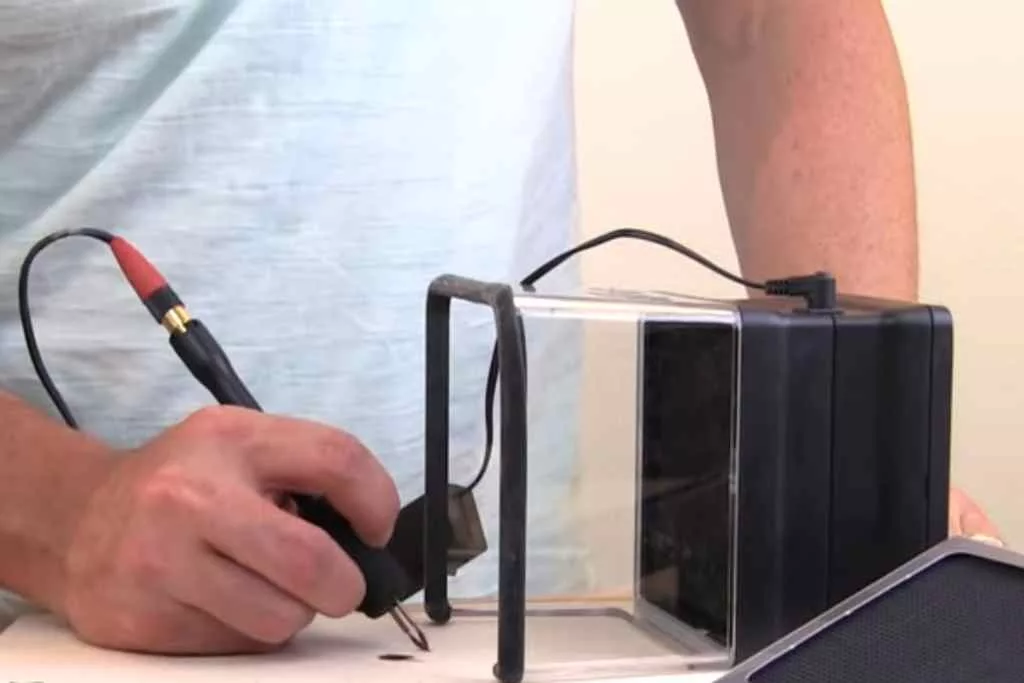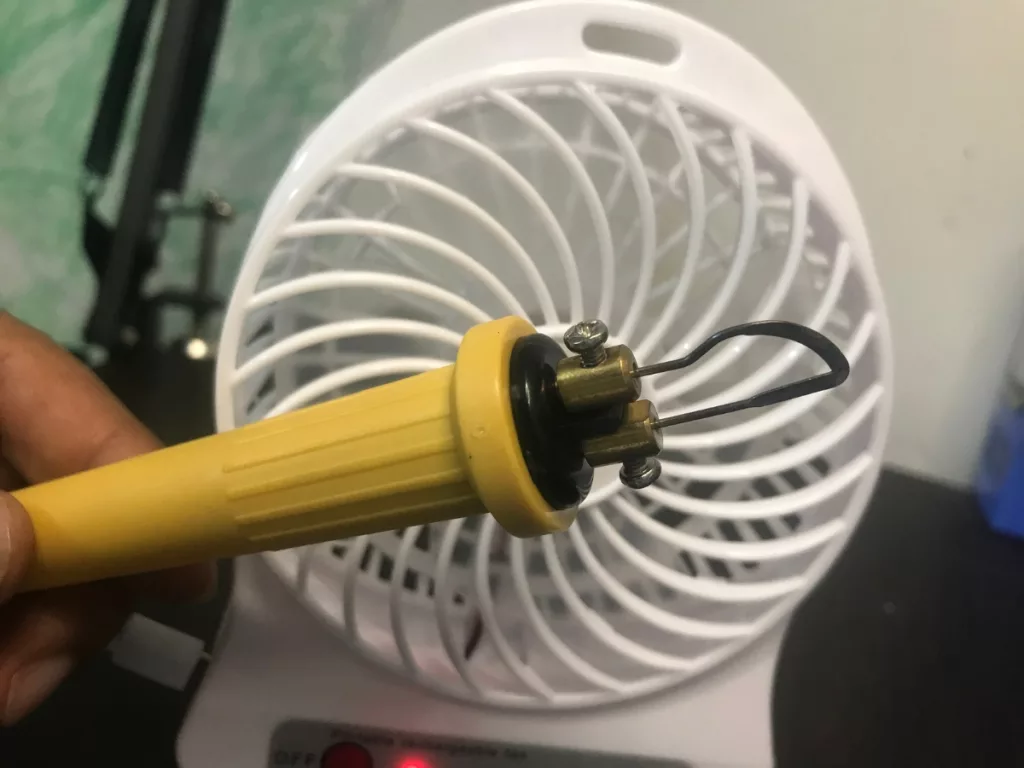3 Types Of Pyrography Smoke Extractors (An Important Safety Device)
A PYROGRAPHY SMOKE EXTRACTOR ( a type of pyrography ventilation, also called as an AIR FILTER) helps change the released fume’s direction away from your face and out of the room. Using such an extractor removes your work distraction, prevents eye burn and various other hazards. And if purchasing a machine seems too expensive, you can make one at home at a low cost.
Now the question is, how reliable are these woodburning fume extractors? And how do you make one without spending much money? I have answered these questions in today’s article, so feel free to read more.
How Does Woodburning Smoke Extractor Work?
- This device is like a reverse fan, or you can just say it is like an exhaust fan. Using the negative draft, this machine helps extract smoke, toxic fume, and other fume particles and soot.
- If there is a vacuum tube connected to the extractor, it can release the extracted particles into the air, away from your workplace. However, not all extractors work in the same way as there are varieties.
- And the ones used for pyrography also vary and work differently according to their build-up system. Nevertheless, using a smoke sucker during pyrography can help direct the fume away from your face as you work and minimize potential threats and hassles.
Types
Since these are of various types, let’s get to see what they are. It will help you decide which one would work better based on your project or workplace type. 3 types of suckers are available in the market.
- Portable
- Benchtop
- Mounted
Portable Type
The portable ones are very small, lightweight, and easy to carry around inside and outside your workstation. But if it requires a hose to connect for fume release, it can limit the number of places you can move it. But thanks to modern extraction systems, you can now find portable extractors that take out and filter the fume without requiring any hose or release pipe. I am happy to have one.
Important Features
- Small size and lightweight
- Easy to move from one place to another
- Often filters out burnt gas without requiring a hose
- May cost more than other types

Benchtop Type
The benchtop fume extractors are the ones that you can set up on your workplace tabletop. They are easier to work with and mostly used for projects that do not require much space or create much toxic air, such as soldering and pyrography.
Some of these devices even have wing-like features to ensure the smoke does not spread. But they are not always easy to move frequently and require more setup space.

Important Features
- Small size and reliable
- Easier to work with
- Wing feature can prevent soot from spreading all over
- Wings require a wider surface area
Mounted Type
The mounted extractors are not exactly portable. They require a specific mounting area, such as next to the ventilation system, on the wall, or on any other higher ground.
These devices have the fan mounted on the high area while the hose sucks in the fume. That is why you must set it up in a place where you can keep the hose next to your work area or on the work surface.
Important Features
- Suitable for heavy pyrography projects that create too much smoke
- Not easily portable
- Can be expensive
- Require specific setup process and space
Advantages
There are plenty of pyrographers out there who do woodburning without using any it. But most of them are highly professional and know how to handle things better. But whether you are a beginner or an expert, having this fan during pyrography can help you in the following ways. I do not take any chance here. Safety is a primary concern in my case.
Reduces Fume
- Wood burning releases fumes continuously, and sometimes they can be very toxic. These are carcinogenic in many cases.
- And as you burn wood, it also creates a plume of burnt carbon, some accumulating on the pen tip and others flying in the air.
- Having an extracting machine helps suck in the smoke before it spreads any further.
Reduces Eye Burn/Irritation
- Pyrography work often requires the artist to bend down, especially when doing small and detailing work.
- Working like this can easily make you inhale the fume or make your eyes burn. I avoid two things in my life, cutting onion without goggles and using a woodburn pen without a exhaust extractor. They both make me cry otherwise.
- Even if you are wearing a mask, it can still cause irritations. That is why it is essential to use a smoke extractor and prevent health risks.
Improves Visibility
I faced this issue many a times. The smoke generated from pyrography obscured the design and made it difficult to see the fine details, making precise work a challenge. Here comes our device as a savior from that low visibility.
Reduced Cleanup
It effectively captures and filters out the burnt particles, resulting in less residue settling on surrounding surfaces, leading to an easier cleanup.
Working Ease for Long Hours
- When your paragraphy work keeps releasing too much smoke, It can be difficult to work continuously for a long time. I would rather watch TV for the whole day than work on my burning job only to get my lungs exposed to toxic air for hours.
- But when you have this device, and it helps remove the toxic air mix, you won’t need to get up from work every now and then to take breaks. Thus, you can work for a long time without such issues.
Reduces Fire Risk
- Smoke and soot can be dangerous, especially when you are doing pyrography in a small or confined place.
- They come with a fire hazard and can cause other serious damages.
- With the sucker helping to remove burnt gas from the area, the risk of unexpected occurrences is very low.
Challenges I Faced In Using This Device
Here’s a glimpse into my journey, sharing the challenges and advantages I have encountered along the way –
Overheating
Despite being my generous friend, this electrical machine sometimes generate additional heat, which is a bit uncomfortable to work with, particularly during longer sessions. This discomfort becomes a bigger issue on hot and sunny days.
Noise Level
I had to dispose off an extractor last month, it was making a continuous dull sound. And I could not stand the screeches while the fan used to start moving. One of my mentors had a machine that produced a considerable amount of noise, which affected concentration and overall working experience with him.
How To Make A Low-Cost DIY Device
These devices are not exactly cheap, and mini models are not always accessible everywhere. So the best way to have a customized extractor at a low cost is to make one yourself. And here is how you can make a DIY woodburning smoke extractor at home.
- Get yourself a computer fan or any unused exhaust fan, or any type of small fan that might do the job.
- Cut out a part from any wood or plastic board as the fan’s frame, just enough to set up an on/off switch. Use glue to secure the switch to the fan.
- Then, connect a power cord from the fan’s switch to the motor. And if you want to attach a vacuum hose to it, you must connect the cord to the hose’s system as well.
- After you put everything together, place the open end of the hose facing the ventilator or open window part and turn on the extractor.
- You can also attach an air filter to the fan to filter out the air.
Here is a video on making an extractor. You can play here directly as well.
Alternative Solutions
What should you do if you do not have a fume sucker machine? Should you just keep working without one?
Well, not necessarily. If you do not have it right away, you can still do pyrography safely with the following alternative.
Ventilation
- One of the most important rules of doing pyrography is choosing a well-ventilated work area.
- If the room has ventilation to remove the caustic gas with enough air passing, you are good to go.
- You can also choose an open area to do pyrography, but that comes with the hectic tasks of setting up the workplace elsewhere.
Mini Fan (Some Call It “Pyrography Ventilation”)
- One of the coolest (no pun intended) and most effective ways to keep smoke away is to use a mini fan.
- The fan might not work as an extractor to suck out the burnt gas mix and filter it, but it can certainly help keep the fume away from your direction.
- All you have to do is set it by your side on the work table and angle it in a different direction.
Final Words
Pyrography can be fun, but it also comes with various risks. And a big part of those risks involves the emitted fume. So using a burnt air sucker is one of the safety precautions every pyrographer should take, whether beginner or pro. And now that you know how to make one, you can work more easily and explore more wood burning art without distractions. Ultimately, your woodburning ventilation helps you to focus more on your work.
Additional Reads
- Here is a good read about woodburn safety






